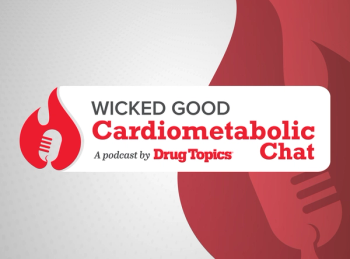
Phase 3 Trial Shows Benefit of Empagliflozin for Pediatric Type 2 Diabetes
Eli Lilly and Company and Boehringer Ingelheim announced their SGLT2 inhibitor, empagliflozin, was associated with statistically significant reductions in HbA1c relative to placebo therapy among a population of pediatric patients with type 2 diabetes in the DINAMO trial.
New data suggests empagliflozin (Jardiance) use was associated with significant improvements in glycemic control among pediatric patients with type 2 diabetes.
Announced in a
"Across the lifespan, we know that people living with type 2 diabetes have a high risk for many diabetes complications, so it's important to recognize and treat diabetes early in its course," said Lori Laffel, MD, principal investigator of the DINAMO study and chief of the Pediatric, Adolescent, and Young Adult Section at the Joslin Diabetes Center and professor of pediatrics at Harvard Medical School, in Eli Lilly and Company’s statement. "Today's results from the DINAMO global clinical trial demonstrated that the SGLT2 inhibitor Jardiance compared with placebo significantly improved overall blood sugar control in children and adolescents with type 2 diabetes. These findings are particularly important given the need for more therapeutic options, especially oral agents, to manage type 2 diabetes in young people as, to date, metformin is the only globally available oral treatment for youth."
As the prevalence of type 2 diabetes continues to rise in adults and pediatric populations, the introduction of a therapy with the potential cardiorenal benefits, such as those demonstrated in EMPA-Kidney and EMPEROR-Reduced, for pediatric populations could stand to provide substantial benefit on a population level. Named the Diabetes Study of Linagliptin and Empagliflozin in Children and Adolescents (DINAMO), the trial enrolled children and adolescents aged 10-17 years with type 2 diabetes an HbA1c equal to or greater than 6.5% and equal to or less than 10.5%. These participants underwent subsequent screening and randomized in a 1:1:1 manner to linagliptin 5 mg, placebo therapy, or empagliflozin in a 10 or 25 mg dose.
Overall, 262 participants underwent screening and 158 underwent randomization. Of these 158, 52 were randomized to Empagliflozin, 53 were randomized to linagliptin, and 53 were randomized to placebo therapy. Of note, all patients in the trial were treated with diet and exercise plus metformin and/or insulin or no background if considered to be metformin intolerant. The primary endpoint of interest in the trial was change in HbA1c at 26 weeks. The trial also included multiple secondary endpoints examining efficacy and safety.
Upon analysis, results of the trial demonstrated use of empagliflozin was associated with a 0.84% reduction in HbA1c relative to placebo therapy at week 26 (95% CI –1.50 to –0.19; P=.012). The release form Eli Lilly and Company noted use of linagliptin was not associated with a statistically significant reduction in HbA1c compared with placebo therapy, with a numerical reduction of 0.34% (P=.2935).
In an analysis of secondary endpoints, results indicated use of empagliflozin was associated with a 35.2 mg/dL reduction in fasting plasma glucose (P=.0035). In their release, Eli Lilly and Company pointed out the overall safety data from DINAMO was generally consistent with findings in adults with type 2 diabetes.
“The rise in the prevalence of type 2 diabetes in the pediatric population highlights a clear unmet need,” said Jeff Emmick, MD, PhD, vice president, Product Development, Eli Lilly & Company, in the aforementioned release. “Having overcome the challenges in recruitment and design that pediatric trials tend to face, the outcomes of DINAMO represent another positive step forward in Boehringer Ingelheim and Lilly’s commitment to improve the lives of people living with cardio-renal and metabolic conditions such as type 2 diabetes.”
This study, “Diabetes study of Linagliptin and Empagliflozin in Children and Adolescents,” was presented at the International Diabetes Federation World Diabetes Congress 2022.
Newsletter
Pharmacy practice is always changing. Stay ahead of the curve with the Drug Topics newsletter and get the latest drug information, industry trends, and patient care tips.





























































































































